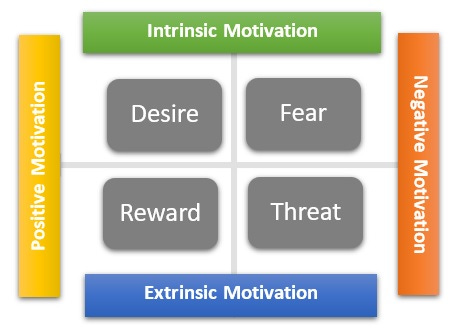Sell more, faster with triggers and motivations
How to understand your customer's contexts and what drives them, and use that insight in marketing and sales.
👋 Hi, I’m James. Thanks for checking out Building Momentum: a newsletter to help startup founders and marketers accelerate SaaS growth through go-to-market strategy, sales, and product marketing.
Sign up to get two posts in your inbox every Tuesday and Friday:
Here’s the truth: In B2B, nobody is going to buy your product randomly.
Unlike B2C, there’s no impulse purchase. There’s no buying on the off-chance it might be useful, something to keep in the back pocket.
Your product is only ever going to be bought when it provides value: that is, it delivers elements the buyer wants which are useful, a priority, and worth the effort (cost/time/energy).
But don’t be disappointed. This is an opportunity to focus - and as regular readers will know, focus + confidence = momentum.
We need to understand the contexts that decide when your buyers recognise their need exists and what propels them through the evaluation process.
We need understand the motivations and triggers that lead your best-fit customers to search for a solution, switch from their status quo, and buy your product.
What are motivations and triggers?
Triggers are stimuli that impact the motivations someone has. Often, these are events that take place that disrupt an equilibrium. In this context, triggers might be things like company funding announcements, career growth, or industry news.
Motivations are the guiding principles which affect the way someone behaves in response to the trigger. There are four types of motivations:
Positive - positive accolades
Negative - negative fear
Intrinsic - internal self-driven
Extrinsic - external forces
These combine in a really nice matrix that looks like this…
… which shows the four ultimate principles that affect how someone behaves:
Desire
Reward
Threat
Fear
These principles subconsciously guide your buyers and stakeholders through the purchase journey. And knowing how to use them will help you sell more, sell faster, and better convey the value you’re delivering.
Extracting motivations and triggers
To understand the motivations and triggers that affect your customers, we need to talk with them.
My 19 customer development questions are designed to pull these out through customer research by asking questions like their biggest personal/professional goals, what winning/losing looks like, and how your product would change their life.
We also need to supplement this insight with win/loss interview research, to dig into the exact scenarios that your prospects were walking through when they began the evaluation process.
I then use a simple framework like this, designed to think through the triggers and motivations that drive people to action.
First we consider the lenses that someone can operate through.
Personal: me, myself and I
Professional: me at work
Organizational: work
And then we look at the different timeframes under consideration.
Immediate pains: self-explanatory; ongoing frustrations
Short-term: tangible problems that can be solved
Mid-term: aspirational achievements
Long-term: visionary undertakings
With each combination, we can think through both the triggers (events and other stimuli) and subsequent motivation (desires, threats, fears, rewards) that drive someone to action.
Using motivations and triggers in marketing/sales
Now, the fun part. We’ve got real evidenced insight from customers, we’ve mapped it to the different lenses/timeframes that our buyers operate in. How do we use this valuable information to help us win more?
Here are a few examples of how you can use triggers and motivations in marketing and sales.
Use content marketing to showcase the potential rewards available
Drive up the fear and threats at risk through content, using social proof for added evidence
Highlight triggers through paid ads and create more trigger opportunities
Use influencers and highlight their status to speak to the rewards that can be gained
Create an award process to promote intrinsic desires
Integrate desires into your positioning, using self-actualization as a value for competitive differentiation
Ensure threats and fears are highlighted in your sales pitch: make sure everyone knows what losing looks like
Through paid ads, content, and sales outreach, drive up the pain of same
Sell more faster with triggers and motivations
Whether through highlighting the potential rewards, promoting the achievements, or dialling up the fear of failure, it’s important to understand the contexts that your best-fit customers experience and the psychological factors that affect their thought process - and then use them in your marketing/sales.
By focusing on the specific triggers and motivations that cause your customer to take action and influence their behavior, you can take charge of those to sell more, faster.
How are you using triggers and motivations in your marketing and sales? Leave a comment and share your thoughts:
Did you like this post? Click the ♥ symbol below to let me know.





